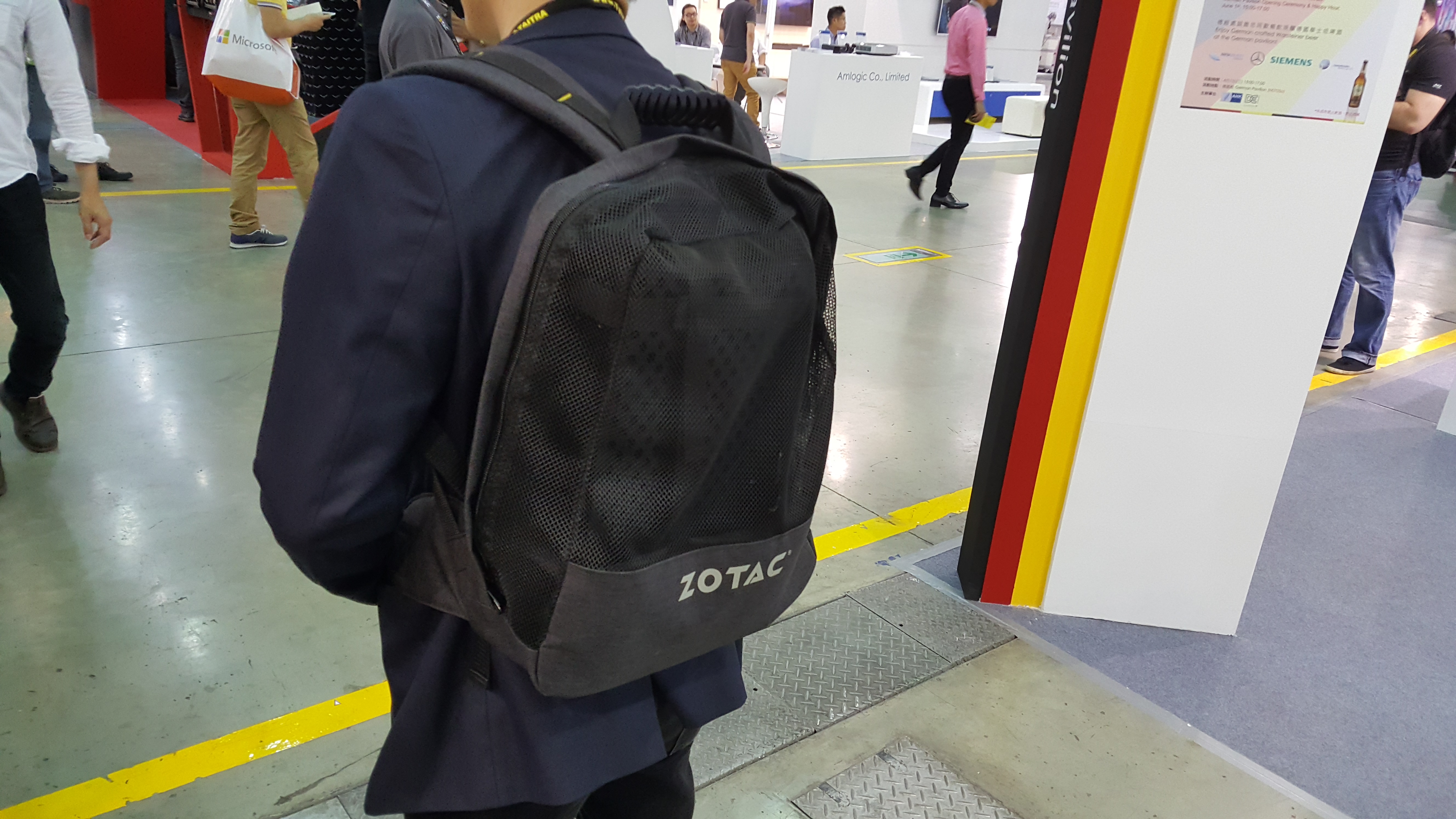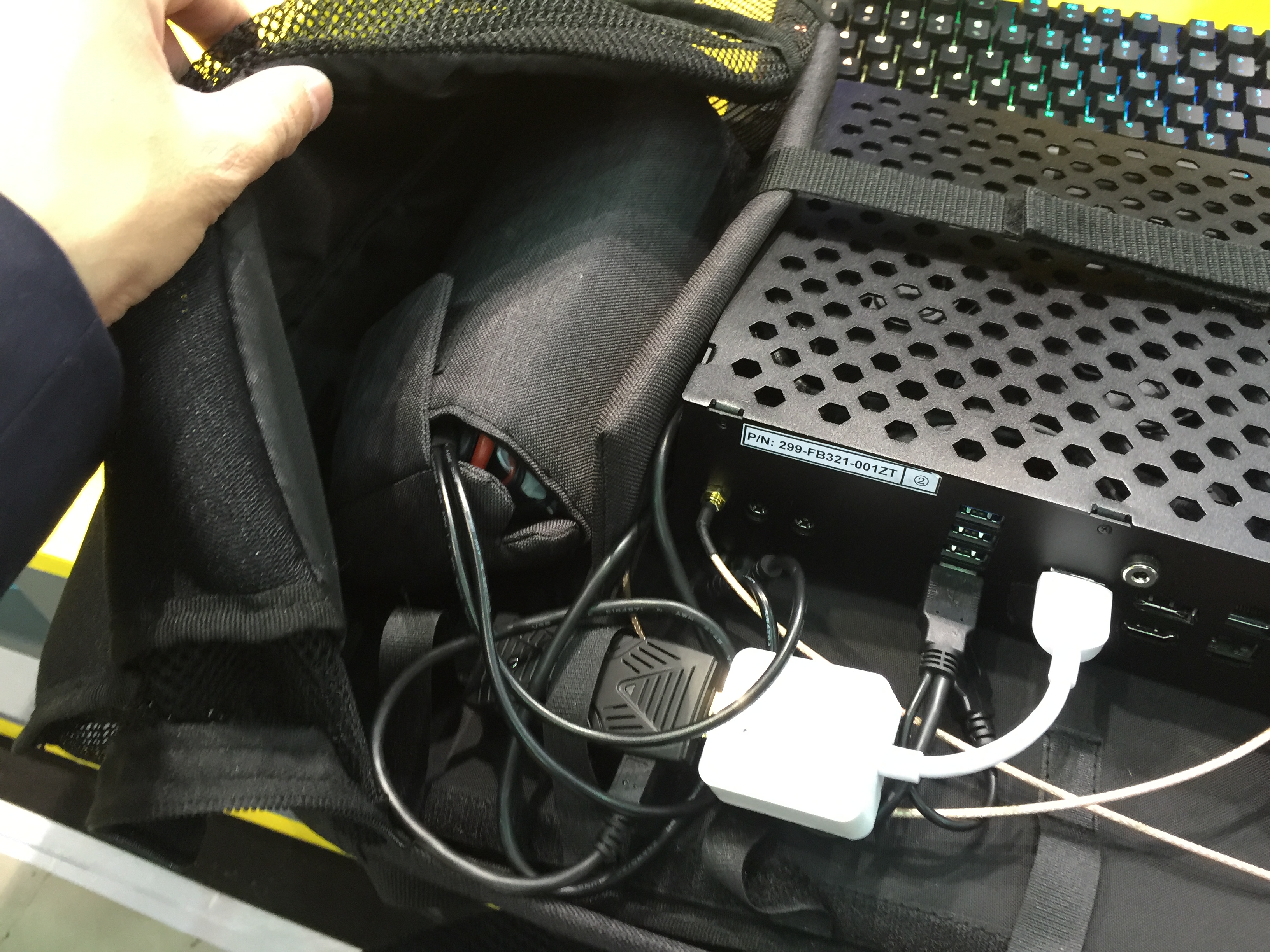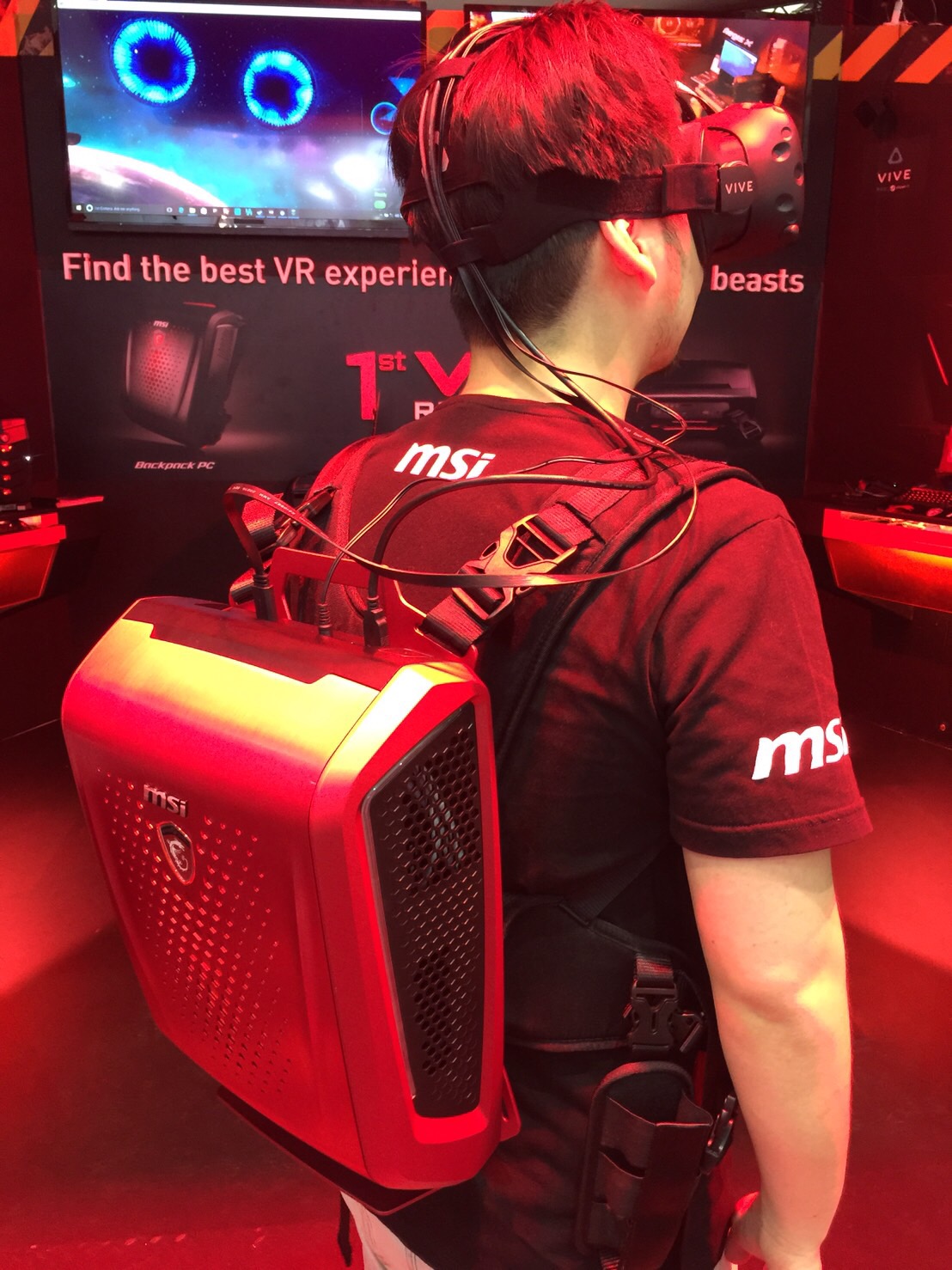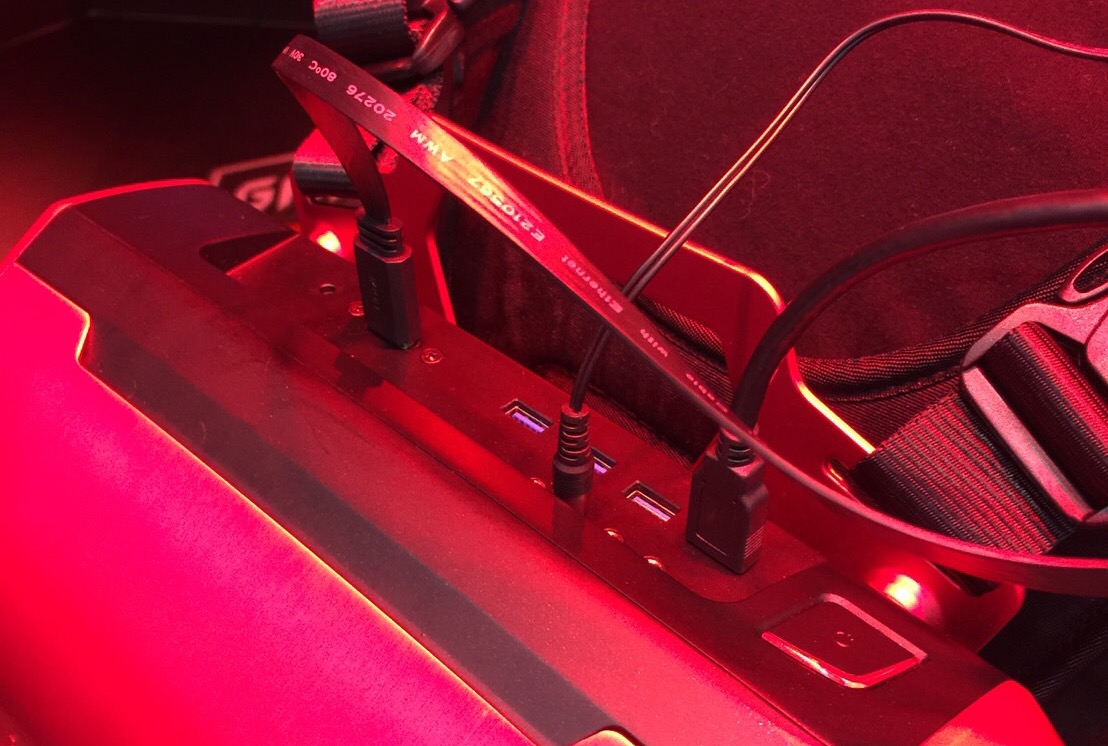Today's VR backpacks are a first stab at cable-free VR
The bane of VR is being tethered.

The primary obstacle for walking around in VR headsets is that they're tethered. To realize our Snow Crash cyberpunk dreams, we want to be untethered, free to dodge enemies and lean around virtual corners without worrying about tripping over a cable and destroying $800 of gear. Right now, HTC's Vive is the only consumer headset that lets you freely walk around in a VR environment, and even though it has a long cable, a tether is a tether. The more you get into VR, the easier it is to tangle yourself up.
"We've done a lot of user testing around this issue and our conclusion in the end was you can't pretend the cable doesn't exist," Palmer Luckey told us in an interview around the launch of the Oculus Rift. "You have to design your game around the cable." For now, it's the job of VR game developers to design great experiences around a tethered system—and it's the job of hardware companies to start figuring out how to solve the cable problem.
The first stab, as we've seen at Computex 2016, is backpack PCs. Gearing up in VR with one of these feels a bit like putting on a Ghostbusters Proton Pack. Is a heavy backpack PC really the solution? We took a spin with Zotac's VR backpack prototype at Computex, one of the proposed solutions for VR cord blues, and came away optimistic.

Quite simply, the Zotac VR backpack is a miniature system inside a normal backpack, with a large battery. At first I was a bit mystified how Zotac managed to get a system powered by a Core i7 6400 and a desktop GTX 980 to run for 2 hours on a battery, but engineers at the company essentially used a very small form-factor PC—which Zotac is famous for—coupled with a lithium-polymer battery made for high-powered drones.

Zotac tells me that its VR backpack can operate the Vive and play games for 2 full hours on a single charge before needing to be re-juiced. This is about 30 minutes longer than the competition.
The backpack was surprisingly lightweight for all the gear that it was carrying, and felt comfortable enough where we could easily see 2 or more hours of use. Zotac said its current VR backpack is a prototype and production versions will be lighter and have everything more neatly assembled. Zotac also included a wireless HDMI transmitter so you can beam a video feed to a display when you're not drifting away in an alternate universe.

Custom Vive cable used.
Gigabyte, HP and MSI have also unveiled VR backpacks that are a bit further along developed than Zotac's prototype. Both HP's new Omen VR backpack and MSI's Backpack PC fully integrate the PC components with the exterior, although Gigabyte's solution is an actual laptop attached to a harness.
The biggest gaming news, reviews and hardware deals
Keep up to date with the most important stories and the best deals, as picked by the PC Gamer team.
Wes tried out the MSI backpack, which uses a hard shell instead of fabric. MSI said that this was done to keep the internal components safe. Both MSI's and Zotac's backpack PCs weigh in the range of 4-5 kg (around 9-11 pounds), but hope to keep the final products on the lower end of that range. The MSI backpack felt surprisingly light strapped on; that would be heavy for a laptop you lug around regularly, but not terrible for a bag you have securely strapped around shoulders and waist. MSI's rig currently supports about 90 minutes of gaming on its battery.
USB ports, HDMI ports, and power buttons are all available on the exterior of the backpack themselves. The drawback to these solutions however is that the wires are still dangling on the outside. Zotac's backpack allows you to stuff the cables inside.
MSI went a bit further and had HTC produce a Vive with a set of custom short cables for its VR backpack. However, the problem of hanging cables still remain for those who already have a headset and want to pick up a VR backpack that doesn't have room to stuff the cables inside.
I asked MSI about this and it was unclear if existing Vive customers could order different cables.
Although Zotac's prototype isn't a fully integrated product, users with existing headsets can hide cables inside and no custom solution is needed. While other VR backpacks may look better than Zotac's, the simplest solution is often the most effective.

In a few years, we'll probably look back on these kinds of VR backpacks and laugh. They're stopgaps, with heavy batteries and short runtimes that will someday look as dated as 1991's virtual reality. But if they help push towards lighter VR systems, that's a win for everyone.
Additional reporting by Wesley Fenlon


